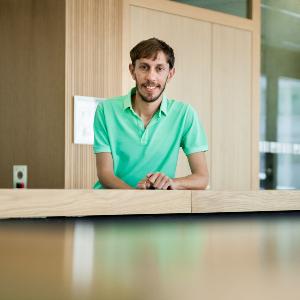Lighting up Chemical Reactions
16 Jun 2019
Plasmonic chemistry, a new promising approach
16 Jun 2019
Plasmonic chemistry, a new promising approach

Catalysts play a key role in many industrial processes. More than 85% of the energy consumed daily by our mobile phones, washing machines and vehicles is generated by processes that involve catalysts. “But catalysts not only make our lives easier,” says Emiliano Cortés, Professor of Experimental Physics at LMU. “In the absence of catalysis, life as we know it would not be possible.” The reactions on which life depends can take place in our cells only because they are made possible by enzymes. Without the action of these catalysts, these reactions would require temperatures of more than 1000°C to drive them. So for Cortés, working on catalysis at the Nano-Institute makes perfect sense. “At the interface between chemistry and physics, we are seeking new procedures and new materials that harness light to drive and control chemical reactions,” he explains. He refers to this particular approach as ‘plasmonic chemistry’.
There is a great demand for more efficient catalysts, because many vital industrial processes still require large amounts of energy to initiate chemical reactions even in the presence of a catalytic agent. In addition, it is often difficult to ensure that only the desired product is synthesized. Cortés hopes to “find new methods that consume less energy – and hopefully use sunlight to enhance the efficiency and selectivity of chemical reactions involving catalysts.”
Cortés recently received a Starting Grant worth 1.5 million euros from the European Research Council (ERC). This will enable him to set up his own group as a Tenure-Track Professor in Professor Stefan Maier’s Chair. “There are now seven of us, and the group continues to grow,” he says. The goal is to develop novel investigative methods that will provide a better understanding of the bases of light-induced chemical reactions. This will require a combination of skills in the fields of optics and chemistry. More specifically, he and his colleagues want to know more about how the interaction of metallic nanoparticles with certain types of molecules is modulated under the influence of light. Our aim is to optimize this interaction.” The new building offers a wide range of options in this respect as the facilities for both optical and chemical studies are first class, he says. “Strong cooperation with the groups in Professor Jochen Feldmann’s Chair will undoubtedly enhance our opportunities. It is an incredibly rewarding place in which to carry out this research.”